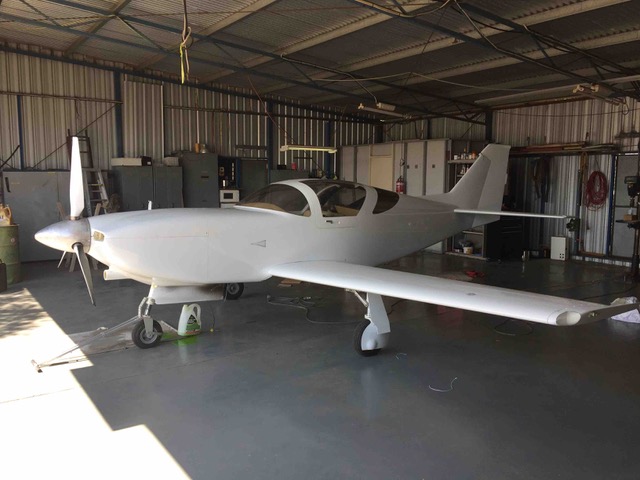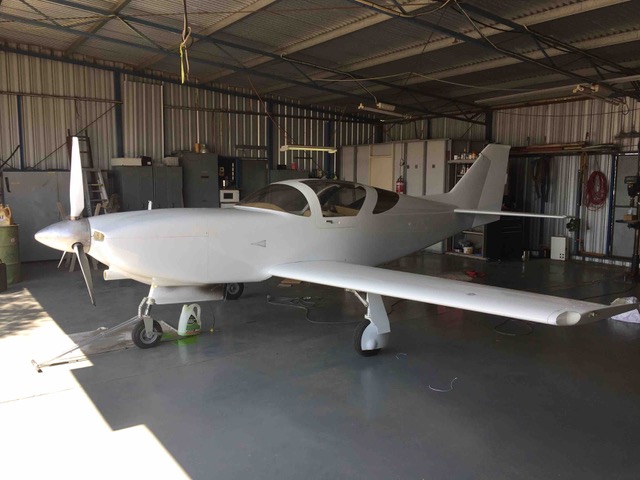Hi Tracy.
When you said you agree with Todd, was this in relation to the oil cooler appearing to be on the small side?
Any other observation re temps etc?
Water Cooler - 13x17.7x2.35 giving 541in3 fed by 20in2 right cheek which gets very little air from the prop.
Oil Cooler - turbo rx7 11x8.75x2 giving 193in3 fed by 7.4in2 inlet 12” below spinner, which gets better prop blast.
See photo for inlets (left cheek feeds air filter and cooling of coils only. Right cheek is mirror image)
Thanks again for your gearbox, controllers and knowledge base over the years.
Very much appreciated.
Steve Izett
 On 18 Mar 2018, at 4:03 am, Tracy Crook rwstracy@gmail.com <flyrotary@lancaironline.net> wrote:
Hi Steve,
I agree with Todd’s comments. The EM2/3 will not give reliable airspeed readings below around 20 MPH due to the limitations of the sensor used and resolution of the ADC in the EM3.
Glad to see the progress!
Tracy
Sent from Mail for Windows 10
From: Stephen Izett stephen.izett@gmail.com
Sent: Saturday, March 17, 2018 5:35 AM
To: Rotary motors in aircraft
Subject: [FlyRotary] Re: Glasair Testing
Hi guys
I repotted the graph using gps ground speed (there was no breeze that day) as it shows the lower speed taxing where the airspeed indicator doesn’t down low.
Cheers
Steve Izett
<69C652B733844F5DB5ECD4A530438876.jpg>
On 17 Mar 2018, at 5:28 pm, Stephen Izett stephen.izett@gmail.com <flyrotary@lancaironline.net> wrote:
HI Todd
Thanks for the feedback. And yes the manifold pressure does make sense, I was upside down expecting a lower manifold pressure at WOT. Doh!
I’m colourblind and cant differentiate between some of those colours so was getting confused.
Yes that Cri Cri is an interesting and tiny machine.
Dawie and Sarki are great guys with heaps of experience and have been so very helpful.
They bring it out every time we have an open day at our club. The crowds love it.
On another note I’m very interested in the possibility of turboing the renesis in the future if all else goes well.
What turbo are you using, what level of boost do you use and what hp do you think this is creating?
Thanks again
Steve Izett
On 17 Mar 2018, at 4:29 pm, Todd Bartrim bartrim@gmail.com <flyrotary@lancaironline.net> wrote:
Hi Steve;
The manifold looks like exactly what I would expect to match your RPM, so no worries there. The temps don't look too bad to me. Possibly your oil cooling might be little low as it begins to increase rapidly when you add power and during an extended climb-out you may see that get a little hotter than you like, but it looks like it stabilizes quickly when you reduce the power.
If everything else is performing well (fuel, electrical) then I don't see why it's not time to see how it cools in the air. That's a quick plane so my guess is that if you have enough ground cooling for indefinate ground operation, you may find excess cooling (and drag) in the air.
But the real reason I'm responding right now is not rotary related.... A JET POWERED CRI CRI???? Holy s**t, what will they do next! So I found the YouTube video of it (VH-ZSE right?) That's pretty cool!
Todd
C-FSTB
RV9 Turbo13B
Todd Bartrim
On Fri, Mar 16, 2018 at 6:29 PM, Stephen Izett stephen.izett@gmail.com<flyrotary@lancaironline.net> wrote:
Hi people
Continued testing the Glasair Super IIRG yesterday with an OAT of 70. See graph of 13 minutes of data (Note: temps in C, Speed in Knots)
Apart from collecting data on the cooling I flooded my system with adrenaline.
On the second run as I hit about 45knots I encountered very high vibration with no warning. I braked and turned of the engine thinking it emanated from the engine/prop.
After leaving the runway and stopping for a few moments I tried a restart, and found all perfectly normal. Previously I had encountered huge missing at rpm so immediately thought that was the issue.
Having wrongly diagnosed the phenomenon I taxied back and did another run seeking to emulate the fault. Well this time I got up to about 47knots and all hell broke loose.
I was barely able to control her, leaving the strip and into the ruff. Over the radio came the call “if you continue with that front nose shimmy you will destroy your aircraft”.
Well I had no interest in continuing the testing at that stage but was very thankful for the feedback from someone watching on. With my lack of expertise I had completely failed to realise what was happening.
Back to the hangar and pulled the Shimmy Damper apart. Oil had gotten in at some point, so cleaned it up and re torqued the assembly.
A friend on our airstrip with extensive experience in many different aircraft (he has an RV8, Longezy, jet powered cir cri, Comanche twin) then took it out with me (data not provided) and he confirmed he thought the aircraft seemed very responsive (shimmy Damper a little to tight now) and proceeded to lift the nose off for the first time under its own power at a little over 50 knots.
So some big lessons for me in relation to my expertise and risk profiling.
Temps still concerning but I’m wondering if there is enough capacity to attempt flight testing.
I would appreciate any wisdom that any of you glean from the log data. (I expected a different result from the manifold readings, so not sure what is going on there)
Thanks
Steve Izett
Perth WA - Glasair Super IIRG with Renesis 4 port, RD1C, EM3, EC3
<Testing 16th March 18.jpeg>
--
Homepage: http://www.flyrotary.com/
Archive and UnSub: http://mail.lancaironline.net:81/lists/flyrotary/List.html
<69C652B733844F5DB5ECD4A530438876.jpg>--
Homepage: http://www.flyrotary.com/
Archive and UnSub: http://mail.lancaironline.net:81/lists/flyrotary/List.html

VH-EXP.jpeg
|